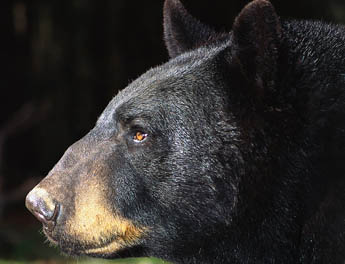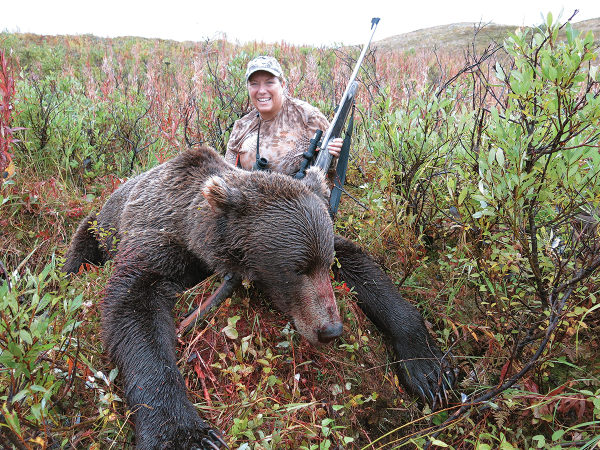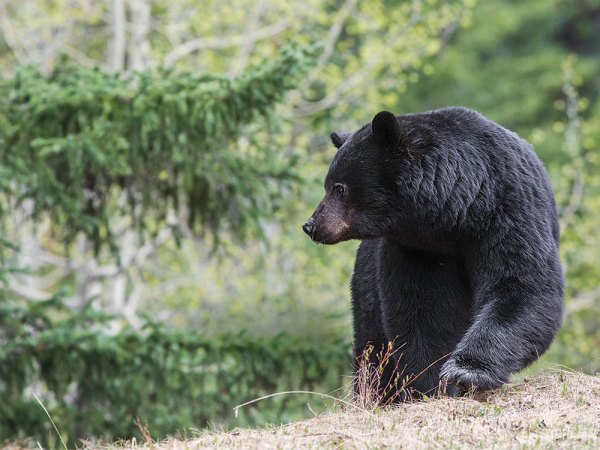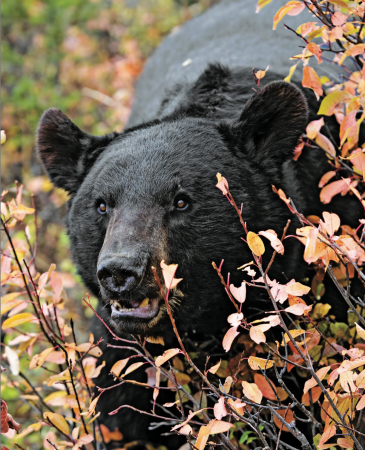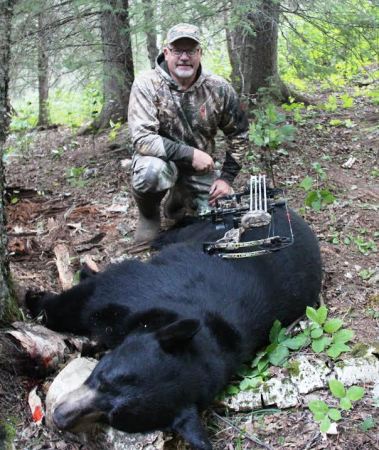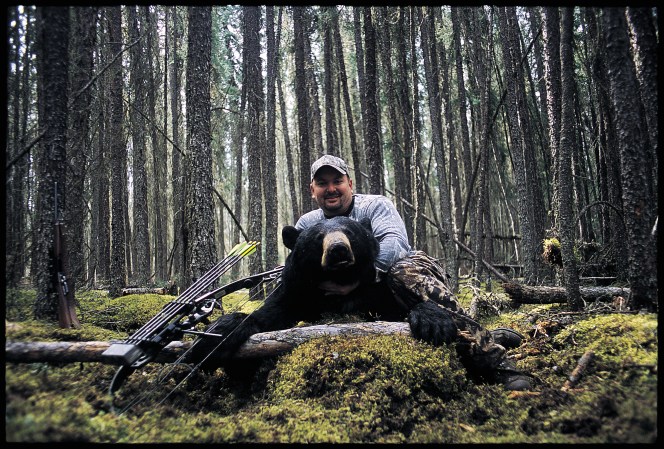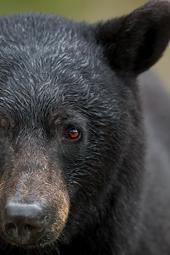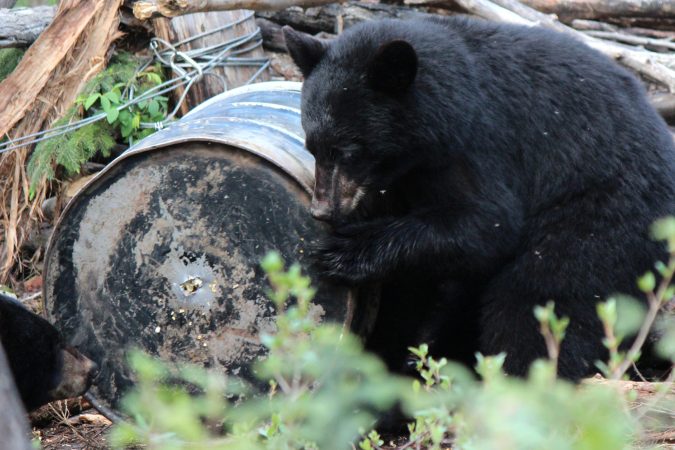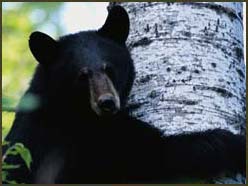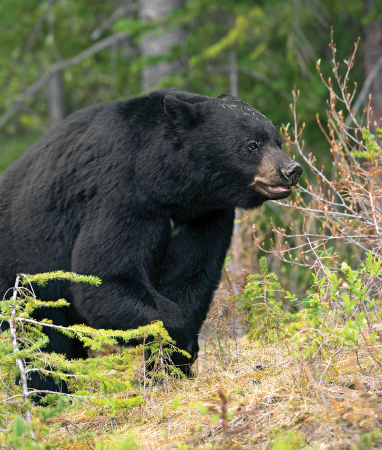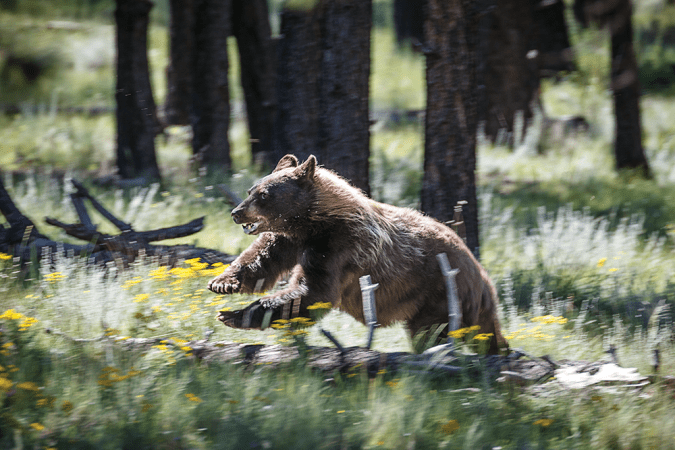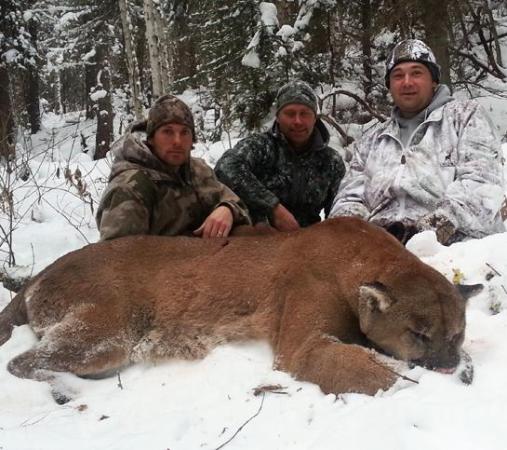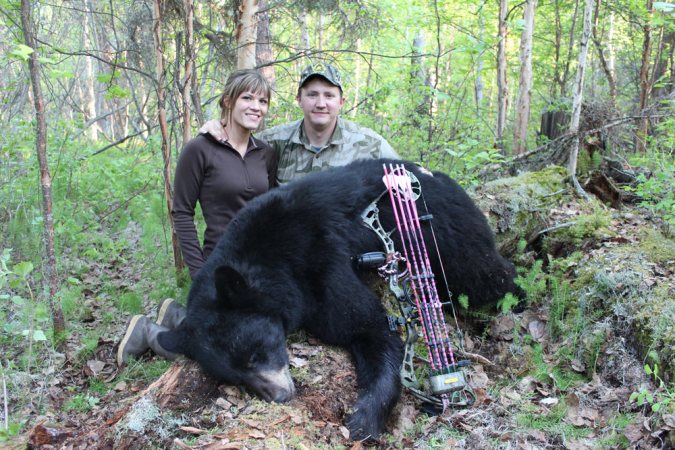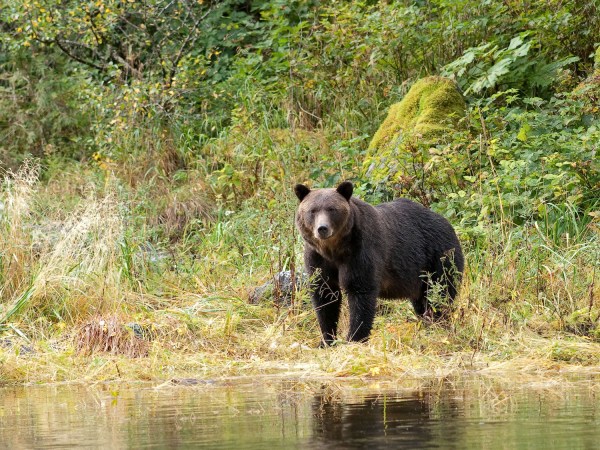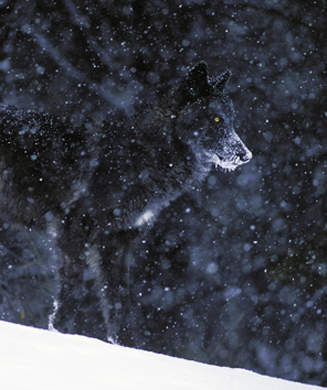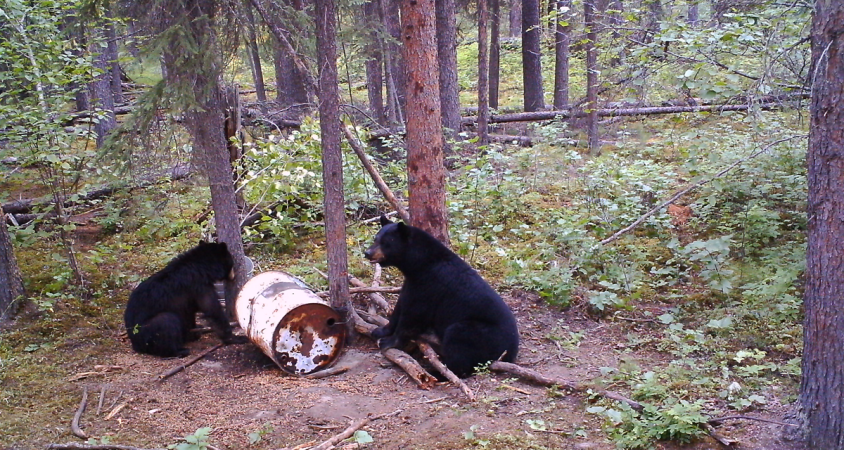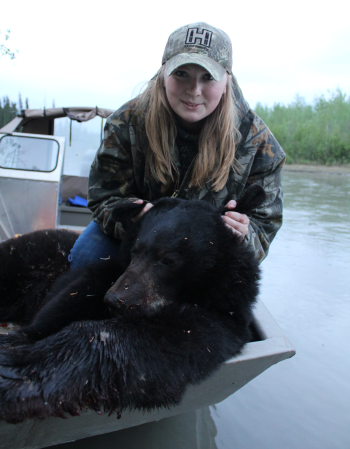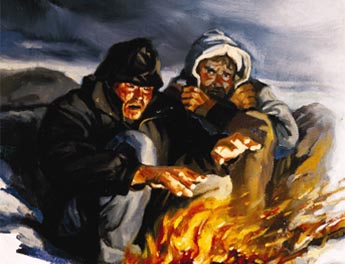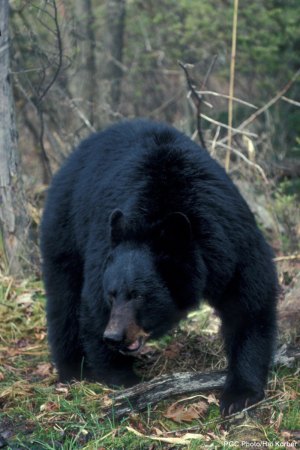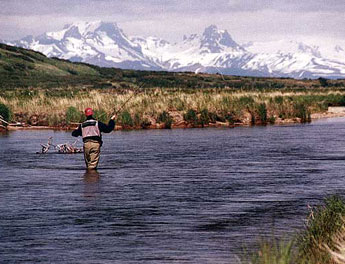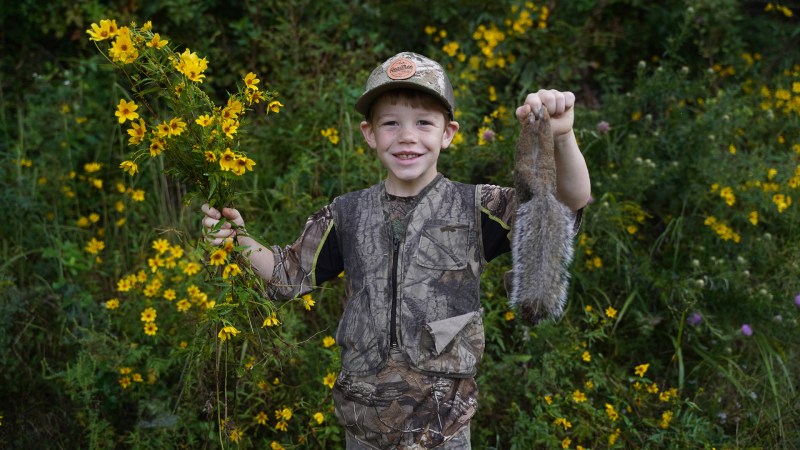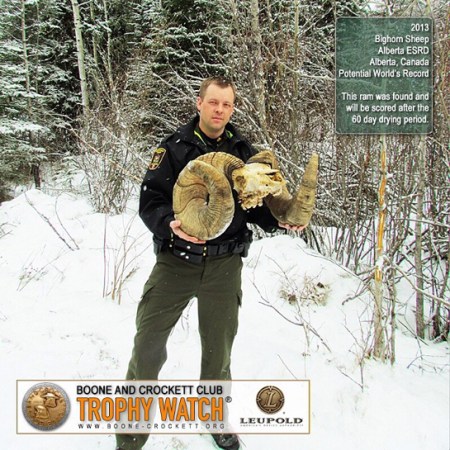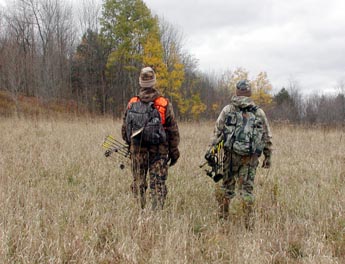After years of listening to stories ranging from a tale about three bears and a frightened little blond girl to gruesome accounts of maulings, I half expected to be torn limb from limb the first time I went hunting for springtime bears.
Black bears, actually. When I think of that hunt now, I see a setting sun filtering through new green on a cool May evening. Eerie shadows lurk beneath the forest canopy, then grow bolder and slink closer in the waning light. A bear emerges at the edge of the trail like an extension of the darkness. It is rather surprising. I fumble with my rifle and fire. A few twigs snap, marking the bear’s quick retreat, then all goes quiet. Minutes pass and the last daylight fades. Excited but doubtful, I return to camp. My partners and I search all the next day but find no sign of the bear or any evidence that my hasty shot hit it.
Subsequent spring bear seasons, and the company of other hunters, have taught me the value of being prepared to take a shot correctly. The object is to be ready when a bear appears. That seems rather elemental, given that the whole point of going bear hunting is to get a bear, but it is not so matter-of-fact. Unless you spend a considerable amount of your life hunting bears, you never quite get used to seeing one. They’re big and, depending on the stories you’ve been told, at least a bit scary. The best you can hope for is that spotting a spring bear, deciding whether to shoot it and then taking the shot unfolds in a somewhat orderly fashion. After the bear does its part-showing up-the rest depends on you.
**Bear Background **
When a bear emerges from hibernation in the spring it lazes near its den for a week or so, recovering from what must feel like the mother of all hangovers. Once the bear’s digestive system is up and running, the animal starts cruising for food to replace lost calories.
Bears have large home ranges that might encompass more than 60 square miles. Studies have shown that a bear’s range is centered on a major topographical feature such as a valley, and that the bear aligns its territorial boundaries along ridges or mountains. Although a patch of sweet clover might grow over the next mountain, the food is worth less than the energy cost for the bear to climb up and over the mountain to get it. So a bear concentrates on the food available within its home range and stays put for several weeks during the spring once it has found the forage and cover it needs.
First you must find sign that indicates a bear is in the neighborhood. There’s no great trick to this: During the spring bears head toward moist areas, such as creek bottoms, swamps and south- facing slopes, to feed on the first plants of the warming season. The bears eat grasses, wildflowers, sedges and plant roots and stems. A study in northwestern Montana found that spring bears keyed on clover and dandelions.
Security and escape cover must accompany the food source. A patch of lush clover will remain untouched if it’s near a constant parade of people. A hunter must take the unbeaten path to find spring bears. “Bears don’t live long around open roads, so park your vehicle and start walking,” says Timothy Thier, a biologist with the Montana Department of Fish, Wildlife and Parks.
Thier suggests that the best way to start looking for spring bears is to hike or ride a mountain bike on roads that are closed to motorized vehicles. These are typically Forest Service roads. Not only are they seldom traveled, but they pass through good habitat that also offers security for bears. “The big males don’t move around very much first thing in the spring,” Thier says.
[pagebreak] Fresh scat is the best sign that bears are near. Look for piles of droppings containing half-digested grass. “If you find lots of bear sign, come back in the evening, because that bear is going to be there. Only around mid-May, when the beding season starts, do the boars start roaming more.”
Alternative Hunting Methods
Most Western states with spring bear seasons prohibit the use of bait or hounds to hunt bears. That leaves spotting a bear from a distance and stalking to within sure range as the main hunting technique. “Get up on a knob with your binocular and watch the south- facing hillsides,” Thier advises. “Seeps and avalanche chutes have the first green-up, and that’s where the bears will be. A patch of new clover is just like bait to a bear.”
In areas where high vantage points are hard to come by, and where baiting is a legal option, a hunter is better off attracting bears to his stand. “You pretty much have to bait bears where we hunt because the country is so flat and thick you can’t see beyond sixty yards in most places,” says Richard Page (780-922-6602), who guides bear hunters around Fort Vermilion in northern Alberta.
Page says one important advantage of baiting is that it draws a bear in close so a hunter can size it up, make sure it doesn’t have cubs and take a shot that will dispatch the bruin quickly. But proximity holds disadvantages, too, “Every year we’ll get at least one hunter who goes to pieces when a bear comes in close,” he says. “Usually, though, a hunter has time to calm down, get a good look at the bear and decide if he wants it or not.”
Page admits that even hunters who have seen bears before often become unnerved when a boar comes to a bait right in front of their tree stands, but it’s a psychological variable that every hunter must learn to control. “You just have to prepare yourself mentally to keep cool,” he says. “To tell the truth, I don’t know how you go about that. Experience, I suppose.”
Baiting entails more than leaving a pile of stale doughnuts in the bush and then coming back the following weekend to shoot a bear. “A lot of time goes into finding where bears are in an area and then choosing a site where they’ll come to bait,” Page says. “A lot more time goes into maintaining the bait.”
Some hunters lure bears into range with a varmint call-in effect making themselves the bait. As with other methods, calling only works if bears are in the area and close enough to hear the simulated bleats of a fawn in distress.
[pagebreak] One Saturday in May I found plenty of bear sign in a canyon far from the road’s end but couldn’t find the bears that left it. The next day I glassed until early evening, but still the bears remained hidden. Just to see if it would work, I blew my varmint call. Within a minute a bear came loping around the side of the hill where I was stationed. I caught glimpses of the bear as it moved through the trees but decided it was too small. I quit calling. Even so, the young bruin came within 50 yards and paced about for a few minutes before leaving.
After the bear had shuffled away, I climbed over the ridge and called in another. This one was medium-size and came on the run. Even if I had wanted to shoot it, I wouldn’t have been able to. The bear kept to the cover and never stopped as it circled my stand. It finally walked off. I didn’t call in a mature bruin, but I was satisfied that I could have if one had been within earshot.
Utah, Alaska and Idaho still allow hunters to chase springtime bears with hounds, but it’s difficult to find a guide with dogs. This is a high-energy sport that requires a lot of time and effort. A friend of mine who hunts with dogs in Idaho every spring says that the bears run like demon greyhounds. Still, once his hounds tree a bear, my friend has all the time he needs to catch his breath, size up the bear and shoot if he wants to.
Count On One Shot
A bear hit anywhere on its body usually falls at the impact of the shot and then gets back up and goes some distance before the shooter can recover from the rifle’s recoil and shoot again. A bear’s hair and fat keep a wound from bleeding profusely, and apart from the noise of a wounded animal crashing away through the underbrush, there is little else to mark its trail. “A bear’s feet are so padded they hardly make tracks in dry terrain,” Thier says. “So a wounded bear doesn’t leave much to follow.” Which is why it’s important to make the first shot count, so that the bear goes down quickly, and for keeps.
Page tells his hunters to wait until a bear has turned broadside before they shoot. “A bear hit broadside behind the shoulder and through the lungs is only going to run forty, maybe sixty yards,” he says. That’s the only shot for a bowhunter because a bear’s thick shoulder blade is apt to deflect a broadhead, depending on the angle.
A bear quartering toward or away from the hunter offers a much smaller target area. Unless you place the bullet perfectly, you’ll have a bear with just a broken shoulder. It’s better to wait.
If you don’t take the time to be certain of your shot and hit a bear right, you’re going to be looking through the thickest cover around to find it again. And that’s never any fun. [pagebreak] Bait Options
Broken cookies Are the most popular ingredient of bear baits in northern Alberta, according to hunting guide Richard Page. But they aren’t necessarily the best.
Page prefers beaver carcasses. He believes that indigenous prey animals are an important component of the most attractive bait recipes. “What works best in northern Alberta won’t do so well in the States. Hunters there have to experiment and come up with their best ingredients,” says Page. “Sometimes the craziest stuff will bring in a big bear, but natural food seems to produce the most consistently for me.”
Some hunters say that rotten meat is the best bait, but Page disagrees. “Based on my experience, the fresher the meat or carcass, the better,” he says.
Spotting the Big Boys
The bigger a boar, the blockier its head. Also, the ears appear to be much shorter, smaller and rounder in relation to the head than they do on younger bears or sows. A young bear (bottom) has big, long ears. Young and sow bears have slender heads with no visible cheekbones.
Another way to gauge a bear’s size is from its tracks. Measure the width of the front footprint in inches and add one to get the size of its hide in feet. For example, a bear that left a 5-inch-wide track squares about 6 feet.
In the West, young black bears might be almost blond or brown in appearance. Older spring bears are almost always black, with perhaps a touch of brown in their coats.
Loaded for Bear
_Rifles in the .30-caliber range are ideal. Accuracy is critical. _
Caliburs: “A .270 Winchester is at the low end of acceptable calibers for bear hunt bear’s hair and fat keep a wound from bleeding profusely, and apart from the noise of a wounded animal crashing away through the underbrush, there is little else to mark its trail. “A bear’s feet are so padded they hardly make tracks in dry terrain,” Thier says. “So a wounded bear doesn’t leave much to follow.” Which is why it’s important to make the first shot count, so that the bear goes down quickly, and for keeps.
Page tells his hunters to wait until a bear has turned broadside before they shoot. “A bear hit broadside behind the shoulder and through the lungs is only going to run forty, maybe sixty yards,” he says. That’s the only shot for a bowhunter because a bear’s thick shoulder blade is apt to deflect a broadhead, depending on the angle.
A bear quartering toward or away from the hunter offers a much smaller target area. Unless you place the bullet perfectly, you’ll have a bear with just a broken shoulder. It’s better to wait.
If you don’t take the time to be certain of your shot and hit a bear right, you’re going to be looking through the thickest cover around to find it again. And that’s never any fun. [pagebreak] Bait Options
Broken cookies Are the most popular ingredient of bear baits in northern Alberta, according to hunting guide Richard Page. But they aren’t necessarily the best.
Page prefers beaver carcasses. He believes that indigenous prey animals are an important component of the most attractive bait recipes. “What works best in northern Alberta won’t do so well in the States. Hunters there have to experiment and come up with their best ingredients,” says Page. “Sometimes the craziest stuff will bring in a big bear, but natural food seems to produce the most consistently for me.”
Some hunters say that rotten meat is the best bait, but Page disagrees. “Based on my experience, the fresher the meat or carcass, the better,” he says.
Spotting the Big Boys
The bigger a boar, the blockier its head. Also, the ears appear to be much shorter, smaller and rounder in relation to the head than they do on younger bears or sows. A young bear (bottom) has big, long ears. Young and sow bears have slender heads with no visible cheekbones.
Another way to gauge a bear’s size is from its tracks. Measure the width of the front footprint in inches and add one to get the size of its hide in feet. For example, a bear that left a 5-inch-wide track squares about 6 feet.
In the West, young black bears might be almost blond or brown in appearance. Older spring bears are almost always black, with perhaps a touch of brown in their coats.
Loaded for Bear
_Rifles in the .30-caliber range are ideal. Accuracy is critical. _
Caliburs: “A .270 Winchester is at the low end of acceptable calibers for bear hunt
